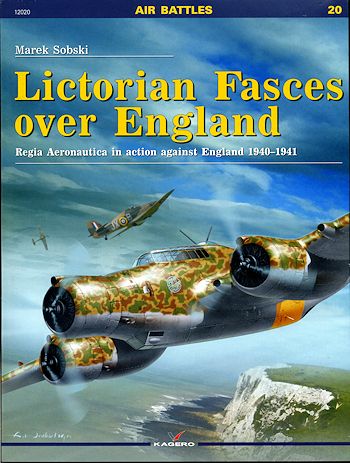 Few
would argue that Mussolini was basically a braggart thug who had little in the
way of strategic capabilities or even common sense. This was shown time after
time during WWII when he envisioned grandiose plans, only to have them go awry
or require Germany forces to pull his rear out of the fire. It all started with
Italy's declaration of war in June 1940 and ended with his ouster in mid 1943
and the eventual armistice with the allies shortly thereafter.
Few
would argue that Mussolini was basically a braggart thug who had little in the
way of strategic capabilities or even common sense. This was shown time after
time during WWII when he envisioned grandiose plans, only to have them go awry
or require Germany forces to pull his rear out of the fire. It all started with
Italy's declaration of war in June 1940 and ended with his ouster in mid 1943
and the eventual armistice with the allies shortly thereafter.
One of his plans was to send aviation units to the
Channel coast to help out in the Battle of Britain. Always a bit slow on the
uptake, Italian air units did not arrive in their Belgian bases until the battle
was basically over in mid/late October of 1940. At that time of year, the
weather was very un-Mediterranean like with fog, rain, and generally cold
weather. Not exactly what crews used to warmer climes were expecting. Not only
that, but Italian aircraft were bordering on obsolescence and none were really
the equal of British Spitfires and Hurricanes. In fact, during one of the early
daytime raids, when the bombers were escorted by CR.42 biplane fighters, the
British initially thought it was a batch of British training aircraft!
One would think that air battles would be a slaughter,
but the truth is that the Italian airmen were not only motivated, but well
trained in the operation of their aircraft. While air to air kills were quite
few and far between for the Italians, they were not much better for the British.
The Italian fighters were quite nimble and nearly impossible for the British to
shoot down. In fact, when looking at total losses during the brief campaign, the
vast majority of Italian aircraft lost were due to navigation errors or
mechanical failures. Italian engines were notoriously underpowered and not
equipped to handle the icing conditions they encountered over southern England
during the time period. After a few months of operations, the units were
withdrawn to North Africa where they were not up against top line British forces
and in a climate for which their planes were more suited.
In the book, the author does a superb job of covering
the various missions flown by the Italians during this time period. He also
covers the history of all the types that were used by the Italians. In fact,
half the book is on aircraft histories and the second half on operations. All of
this is enhanced by large photos of these aircraft and men at their bases in
Belgium. Large full color profiles of the various aircraft involved are also
part of the package, mostly Fiat CR.42 and G.50 fighters.
In all, it makes for a most interesting read on a
short chapter of WWII that few have covered before. A book that those interested
in the subject will certainly want to pick up.
June 2014
Review book courtesy of the fine folks at
Casemate Publishing. Get yours from the link.
If you would like your product reviewed fairly and
fairly quickly, please contact
me or see other details in the Note to
Contributors.
 Few
would argue that Mussolini was basically a braggart thug who had little in the
way of strategic capabilities or even common sense. This was shown time after
time during WWII when he envisioned grandiose plans, only to have them go awry
or require Germany forces to pull his rear out of the fire. It all started with
Italy's declaration of war in June 1940 and ended with his ouster in mid 1943
and the eventual armistice with the allies shortly thereafter.
Few
would argue that Mussolini was basically a braggart thug who had little in the
way of strategic capabilities or even common sense. This was shown time after
time during WWII when he envisioned grandiose plans, only to have them go awry
or require Germany forces to pull his rear out of the fire. It all started with
Italy's declaration of war in June 1940 and ended with his ouster in mid 1943
and the eventual armistice with the allies shortly thereafter.